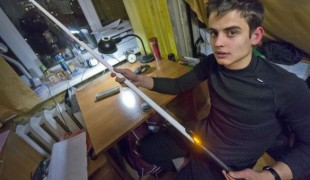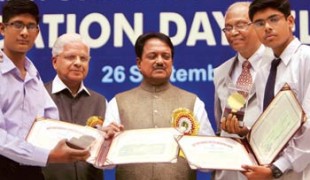- 2216
- 116
- 0
- 0
- 0
- Help Ukraine
About the solution
During his visit to these remote villages, the student realised that the technology was, in fact, marginalising users who didn’t have access to it. As he said, “technology is making them even more disabled”.
The adaptive technology available in India for blind people was not the best for them, as regional dialects and accents can make the English-language artificial voice difficult for a lot of people to understand. Also, this means a lack of privacy for the user as text messages and emails are read aloud by the automated voice.
So he came up with the Braille smartphone, a device that has the same feature as the regular smartphones. He started working on two prototypes: the first generation phone and the Braille smartphone.
The first generation phone works by displaying 10 Braille characters at a time and has a music player, e-mail client, calendar and GPS navigation.
The Braille smartphone will allow users to communicate more easily and in a more private way. It will also feature a sensor to inform the user about the distance of different objects (it will also be able to generate a map which users can follow when they want to go somewhere), scan the colour of objects in front of them, and include a camera that will translate text to Braille, allowing the user to view a face using their touch. Like traditional smartphones, this device will have a touch-responsive screen.
The display screen and Braille characters will be possible because of Shape Memory Alloy Technology. This systems works due to the expansion of metals when heated, which then contract back to their original shape. This device will have a grid of pins that will feature this technology. These raised pins formulate the Braille characters, and on the smartphone’s high-resolution screen will convey other touchable patterns such as shapes, figures and maps.
Sumit founded his own company - Kriyate Design Solutions - in 2012, and has the goal of keeping both of these gadgets affordable.
Adapted from: https://bit.ly/2dZzIyq
More info: https://dagar.me/
https://www.youtube.com/watch?v=xW46W2pV_r8
This solution shall not include mention to the use of drugs, chemicals or biologicals (including food); invasive devices; offensive, commercial or inherently dangerous content. This solution was not medically validated. Proceed with caution! If you have any doubts, please consult with a health professional.
DISCLAIMER: This story was written by someone who is not the author of the solution, therefore please be advised that, although it was written with the utmost respect for the innovation and the innovator, there can be some incorrect statements. If you find any errors please contact the patient Innovation team via info@patient-innovation.com
-
-
669
-
8
-
21028

Der sprechende Stock für Sehbehinderte
Blindness
Congenital visual acuity reduced
Neurologic visual problems NEC
Sudden visual loss
Visual disorders NEC
Visual impairment
Blindness (excl colour blindness)
Blindness congenital
Blindness cortical
Blindness hysterical
Blindness transient
Blindness traumatic
Blindness unilateral
Diabetic blindness
Eyes
Cane
Walking
-
-
-
472
-
0
-
11960

Teen invents smart stick for blind people
-
-
-
377
-
0
-
7786

Blind man invents software to help visually impaired users see data
-
 en
en